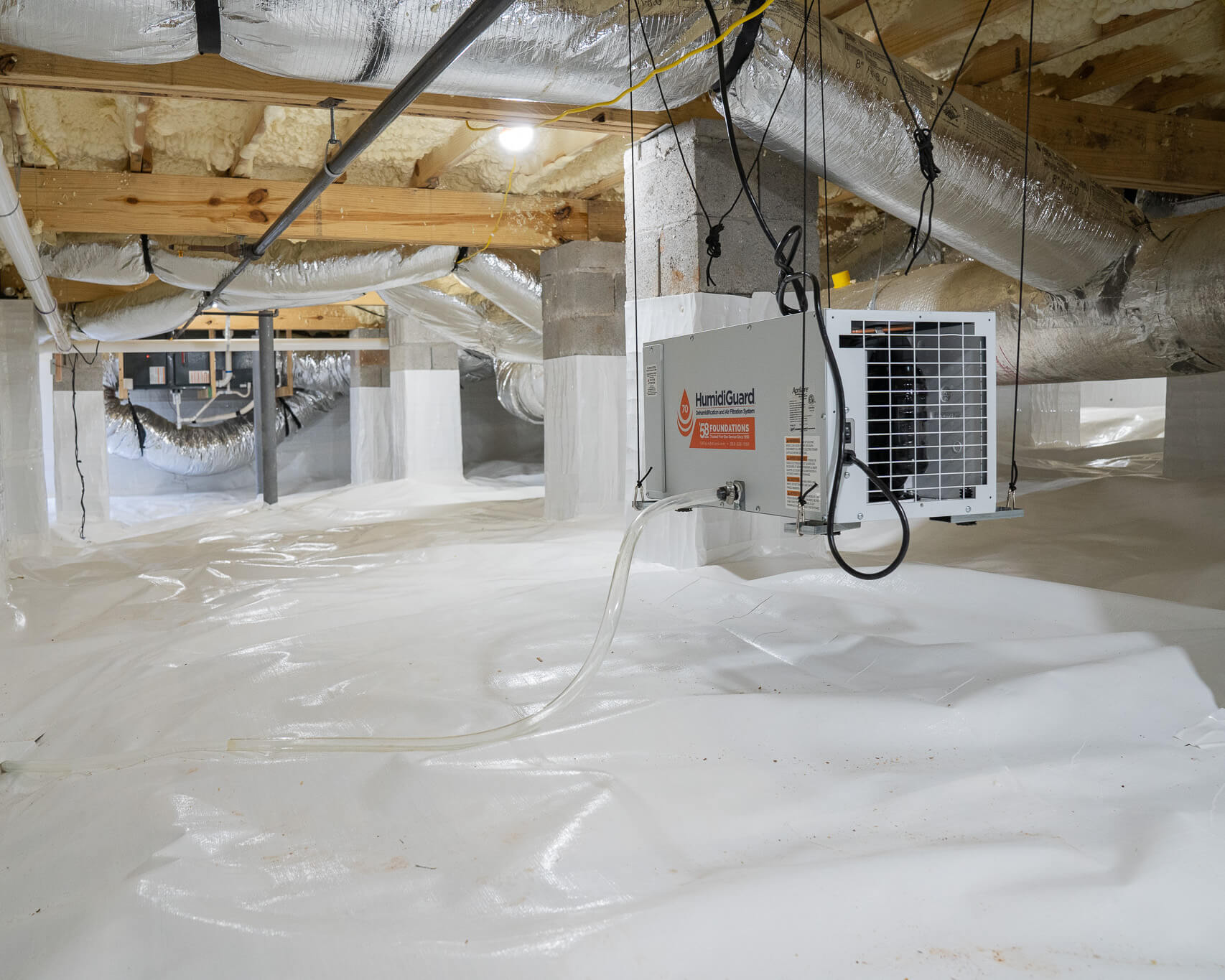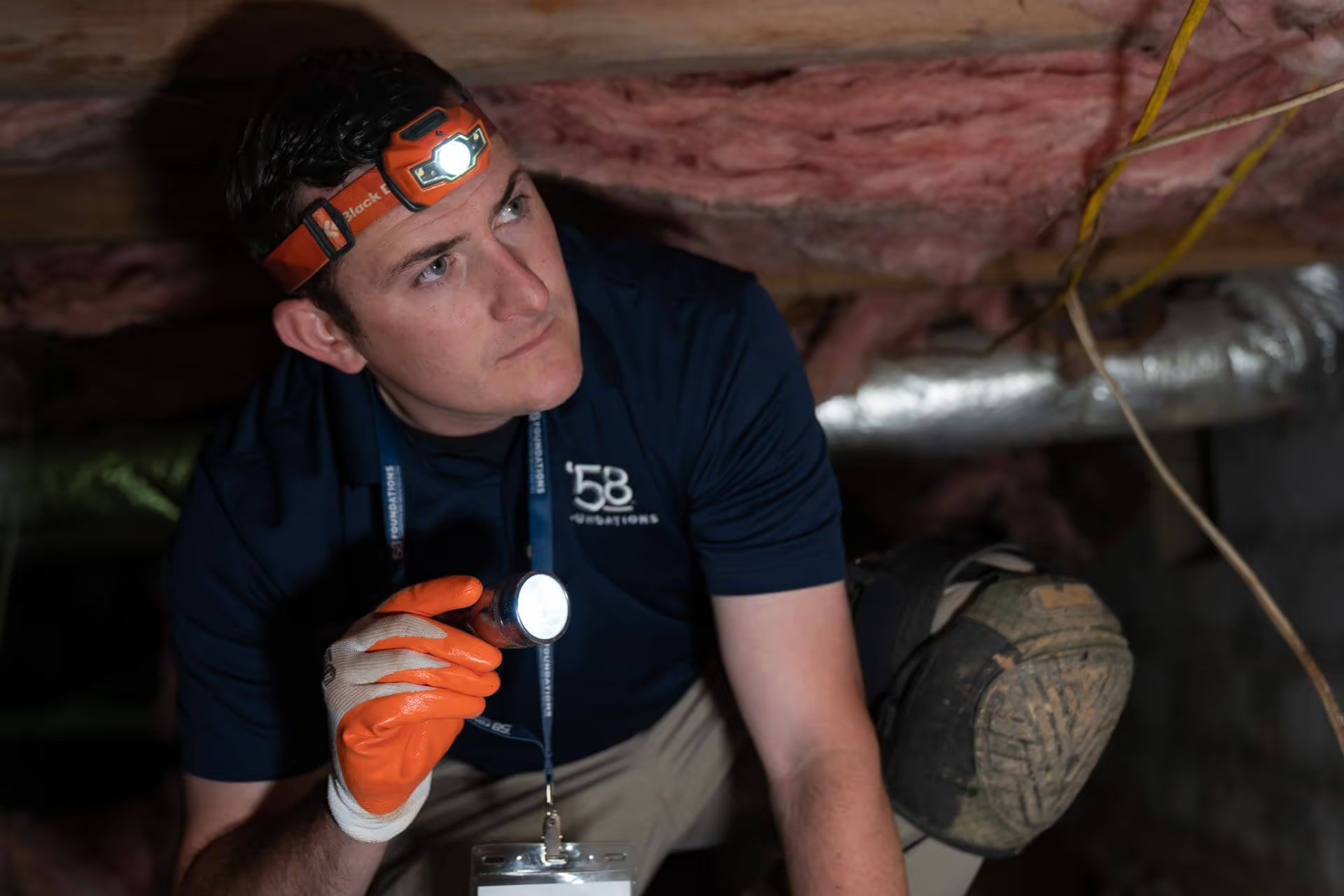
Many homeowners don’t think about their crawl space until something goes wrong; whether it’s a strange smell, cold floors, or an inspection report they weren’t expecting. But knowing what a crawl space is, and how it works, is one of the best ways to protect your home long-term.
A crawl space is a narrow, unfinished space beneath your home, typically 1 to 3 feet in height, that separates the ground from the first floor. While it’s often out of sight, this area plays a vital role in your home’s structure, air quality, and energy efficiency.
Crawl spaces allow access to plumbing, HVAC, electrical wiring, and foundation walls. But more importantly, they act as a buffer between your home and the soil below. Whether your home is built on flat or sloped terrain, a crawl space can protect against moisture, flooding, and unstable ground conditions.
Crawl spaces are one of three common foundation types, alongside slab foundations and full basements. Each has its own purpose, but crawl spaces offer a middle ground, more accessible than a slab, less costly than a basement.
Unlike a slab foundation, which sits directly on the ground, a crawl space raises the home off the soil. This makes it easier to install and service plumbing, ductwork, and electrical systems. It also allows builders to adapt to sloped or uneven terrain, where a slab might not be feasible.
Compared to a full basement, a crawl space is shallower and unfinished. It isn’t intended for storage or living space, but it still affects how your home breathes, drains, and ages over time.
Crawl spaces are especially common in regions with:
They help reduce construction costs while still providing a protective buffer between the ground and your home. But unlike basements, crawl spaces are often left unsealed and exposed to moisture, making them more vulnerable to problems like mold, wood rot, and structural damage if not properly maintained.
Because crawl spaces are out of sight, they’re often out of mind. But neglecting this part of your home can lead to serious problems, many of which start quietly and worsen over time.
When a crawl space is exposed to moisture, the conditions become ideal for:
Moisture can enter through the soil, foundation walls, or vents. Once inside, it lingers, softening wood, rusting metal, and creating a perfect environment for mold to thrive. Over time, floor joists can weaken and sag, causing uneven floors or soft spots inside the home.
If your crawl space is vented or lacks a vapor barrier, it can also allow outside air, pollen, and contaminants to circulate into your home. This can strain your HVAC system and impact your health, especially if anyone in your household has allergies, asthma, or respiratory concerns.
By the time signs appear inside the living space, the crawl space has often been deteriorating for years. Early action is key.
It’s easy to think of the crawl space as separate from the rest of the home. But the reality is, air from the crawl space doesn't stay down there. This natural movement, known as the stack effect, pulls air upward from the lowest part of your home into the living areas above.
When the crawl space is dry and sealed, this airflow may go unnoticed. But if that space contains moisture, mold, or musty odors, those conditions do not stay contained. They rise into your home and affect the air your family breathes every day.
The stack effect is constant. As warm air escapes through the attic or upper floors, it creates negative pressure that draws air in from below. Any contaminants, excess humidity, or decaying materials in the crawl space can be pulled along with it. Over time, this can lead to musty smells, uneven temperatures, and higher indoor humidity levels.
For households with asthma, allergies, or respiratory sensitivities, this invisible connection becomes even more important. A neglected crawl space doesn’t just impact comfort. It can affect health. Sealing and conditioning that space helps stop the upward pull of damp, contaminated air and creates a cleaner, more stable indoor environment.
Yes, and in most cases, the sooner you act, the better.
Crawl space problems are rarely cosmetic. Moisture, mold, and structural damage tend to worsen quietly over time. But with the right solution in place, that space can be transformed from a source of risk into a point of protection for your entire home.
At ’58 Foundations & Waterproofing, we repair crawl spaces by addressing both the symptoms and the underlying causes. That might include sealing off the space with a vapor barrier, improving drainage, installing a dehumidifier, or reinforcing structural supports. In more advanced cases, a full crawl space encapsulation may be recommended to lock out moisture entirely.
Our Certified Foundation Specialists will inspect your crawl space in person, explain what’s happening, and walk you through your options. We do not rely on guesswork or one-size-fits-all approaches. Every recommendation is based on your home’s layout, the soil beneath it, and the specific conditions we observe during the inspection.
All of our crawl space repairs are backed by our Life-of-the-Structure Warranty, giving you peace of mind that the work is built to last.
Most homeowners don’t think about their crawl space until a problem shows up inside the home. But by that point, damage may already be spreading below the surface. Moisture doesn’t wait, and the stack effect keeps pulling that air upward every day.
If you’re starting to wonder what’s happening beneath your home, you’re not alone. A closer look at your crawl space is often the first step to protecting the structure, comfort, and air quality of your entire home.
Want to learn what solutions are available? Explore crawl space encapsulation here.






We respect your privacy. By submitting, you authorize '58 Foundations and Waterproofing to reach you via call, email or text for information about your project needs. We will never share your personal information with third parties for marketing purposes. You can opt out at any time. Message/data rates may apply. Consent is not a condition of purchase. Privacy Policy